AMD Ryzen Threadripper 2950X Review: Striking The Balance
Why you can trust Tom's Hardware
Test Notes
Unlike the first-gen Ryzen Threadripper 1950X, AMD aims its 2950X at enthusiasts and gamers. So, for this review, we tested Threadripper 2950X using AMD's Game Mode setting. Just bear in mind that the company also provides toggles that allow you to customize settings for individual applications.
We tested across our gaming suite using a 1920x1080 resolution, minimizing graphics bottlenecks. Of course, as you step up to 2560x1440 or 3840x2160, the difference between processors shrinks.
VRMark, 3DMark
We aren't big fans of using synthetic benchmarks to measure performance, but 3DMark's DX11 and DX12 CPU tests provide useful insight into the amount of horsepower available to game engines.
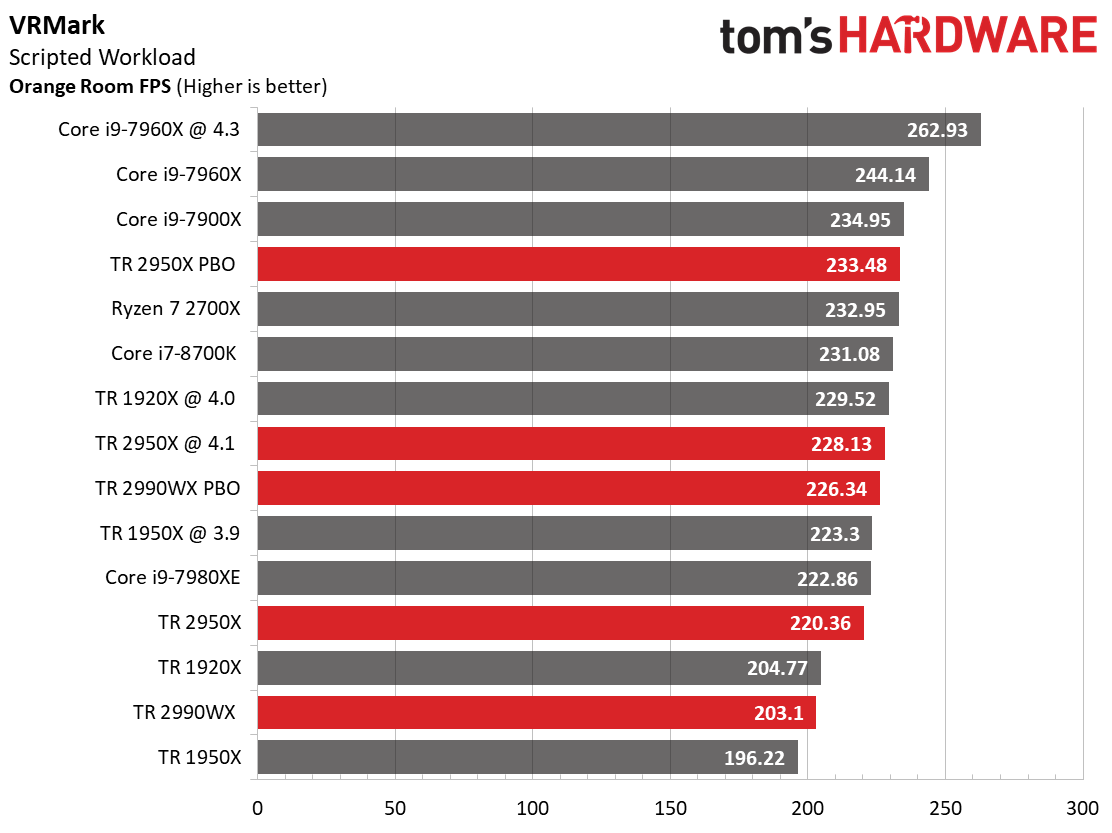
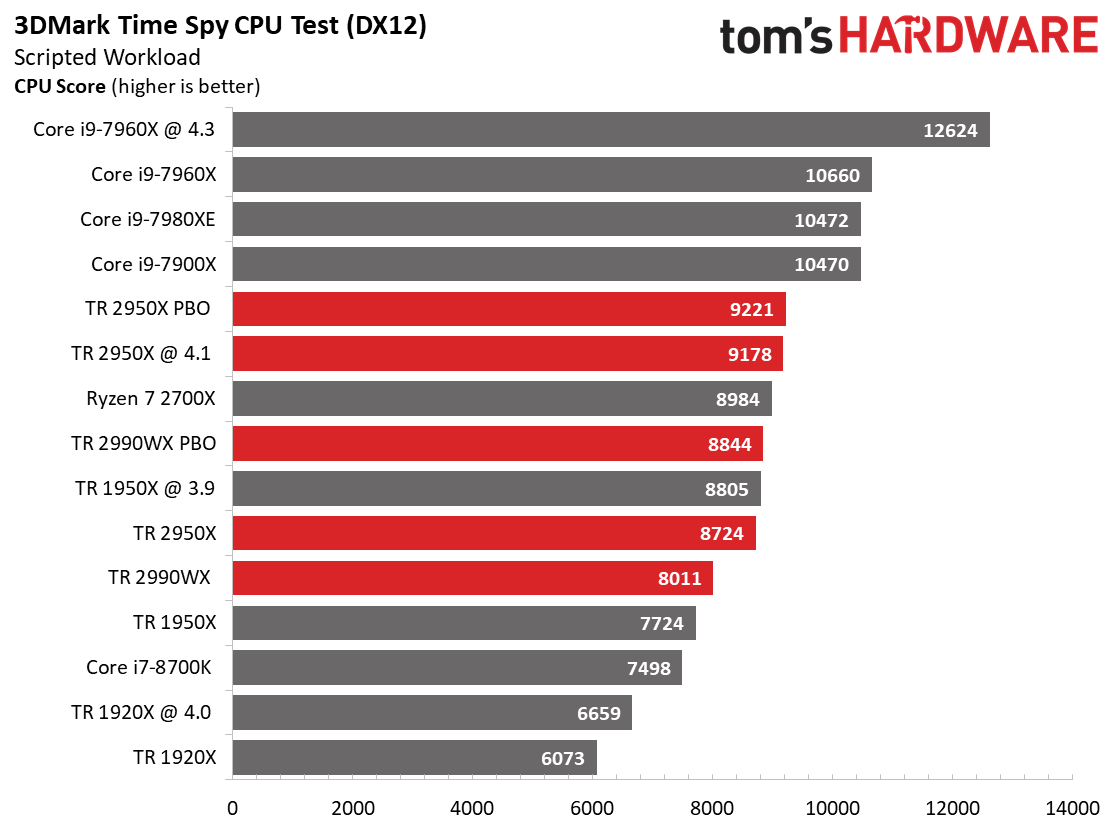
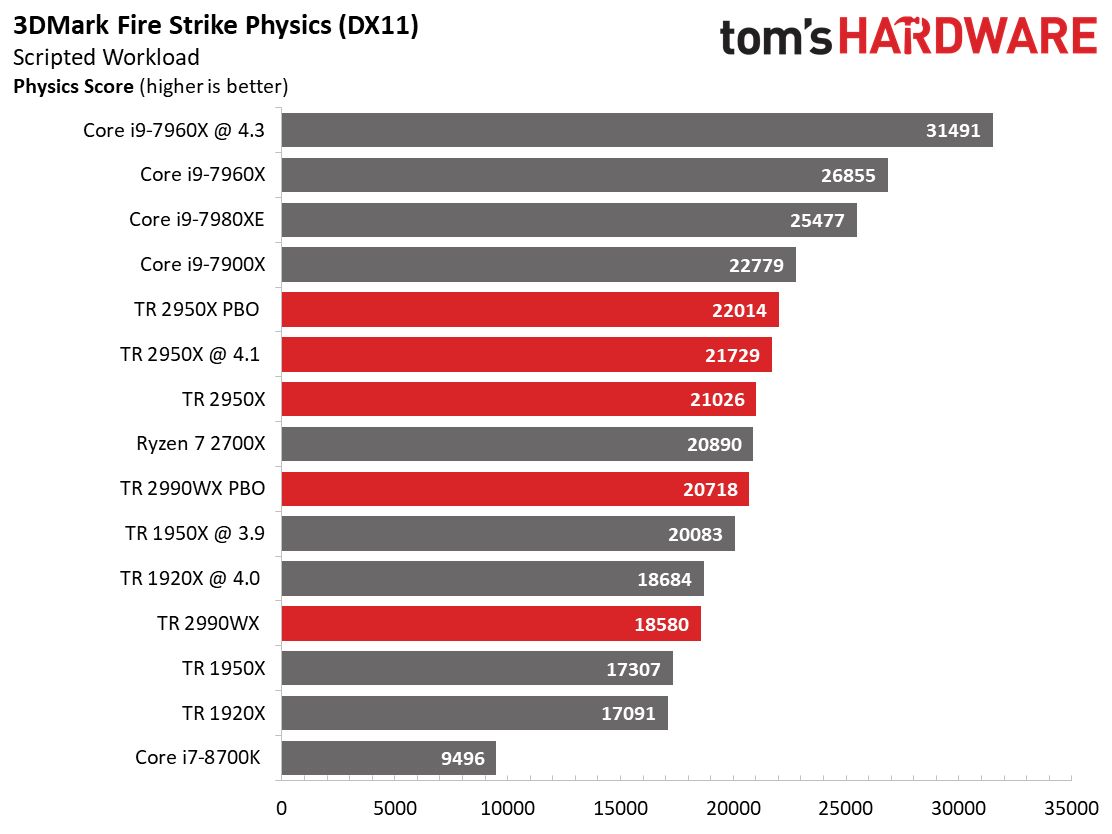
During the DX11 and DX12 tests, automated overclocking through Precision Boost Overdrive (PBO) yields very similar performance to our all-core 4.1 GHz adjustment. Both settings give us a nice boost over stock performance, and there is very little differentiation between the two tuning options. Interestingly, using PBO on the MSI X399 Creation often results in an all-core 4.1 GHz clock rate, albeit with sporadic jumps to 4.2 GHz on a few cores.
UL's VRMark test lets you gauge your system's suitability for use with the HTC Vive or Oculus Rift, even if you don't currently own an HMD. UL defines a passing score as anything above 109 FPS.
This lightly threaded workload allows Threadripper 2950X's PBO feature to trigger a 4.4 GHz boost frequency, which we'd expect to beat our static 4.1 GHz all-core overclock.
Ashes of the Singularity: Escalation
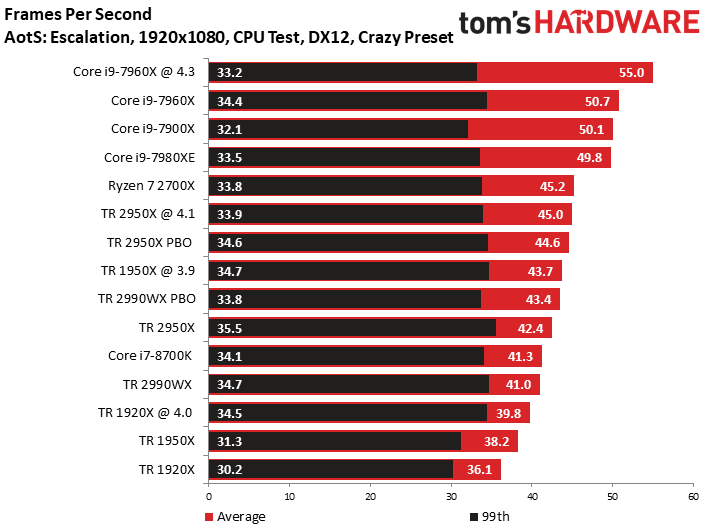
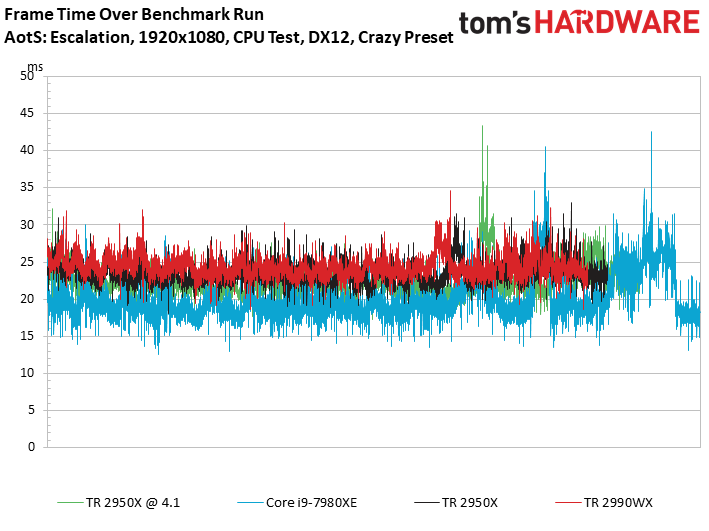

Ashes of the Singularity: Escalation is a computationally intense title that scales well with thread count. PBO allows Threadripper 2950X to stay in its boost states for longer periods of time, though the CPU still down-clocks under some conditions.
Get Tom's Hardware's best news and in-depth reviews, straight to your inbox.
MORE: Best CPUs
MORE: Intel & AMD Processor Hierarchy
MORE: All CPUs Content
Current page: VRMark, 3DMark & AotS: Escalation
Prev Page Overclocking & Test Setup Next Page Civilization VI Graphics & AI, Dawn of War III
Paul Alcorn is the Editor-in-Chief for Tom's Hardware US. He also writes news and reviews on CPUs, storage, and enterprise hardware.
-
djerinich see what are they not telling you is that you can actually run 2 maybe even 3 heavy tasks while getting no performance hit and still use your PC for gaming or whatever, now that's where the time savings and true potential of TR is! basically it replaces 3-4 computers that otherwise you'd need for same tasks. now that's a value.Reply -
Hupiscratch Would love to see a high quality streaming test. With so many streaming channels nowadays, there is definitely people considering using these HEDT platforms for this.Reply -
ElectrO_90 So we all know what this CPU can do and know its ground breaking, and do some really great things. Even the verdict says its great but expensive?Reply
Anyway then it gets 4.5/10
Another weird review with bias' throughout and a conclusion that doesn't make much sense.
I know, I'm going to buy a F1 race car and compare it to a pickup truck just to prove that the F1 car is shit, because it can't carry my shopping. -
Paul Alcorn Reply21358431 said:So we all know what this CPU can do and know its ground breaking, and do some really great things. Even the verdict says its great but expensive?
Anyway then it gets 4.5/10
Another weird review with bias' throughout and a conclusion that doesn't make much sense.
I know, I'm going to buy a F1 race car and compare it to a pickup truck just to prove that the F1 car is shit, because it can't carry my shopping.
Hey electrO_90, thanks for sounding off. The rating is actually a 4.5 out of 5 (nearly perfect). Perhaps it isn't displaying correctly in your region, but I see the rating correctly here. Are you reading on the US site?
-
ElectrO_90 If its 4.5/5 then forgive my rant - but it clearly says hereReply
https://www.tomshardware.co.uk/amd-ryzen-threadripper-2950x-2990wx-cpu,review-34562.html
4.5/10 which is why I don't understand the answer.
And under https://www.tomshardware.com/reviews/amd-ryzen-threadripper-2950x-2990wx-cpu,5797.html
it shows 4.5/5
-
Paul Alcorn Reply21358450 said:If its 4.5/5 then forgive my rant - but it clearly says here
https://www.tomshardware.co.uk/amd-ryzen-threadripper-2950x-2990wx-cpu,review-34562.html
4.5/10 which is why I don't understand the answer.
And under https://www.tomshardware.com/reviews/amd-ryzen-threadripper-2950x-2990wx-cpu,5797.html
it shows 4.5/5
Thanks for the heads-up, I'll report that to the relevant people.
-
michael_732 Reply21358096 said:Ryzen Threadripper 2950X builds on all of the goodness offered by AMD's first-gen Threadripper processors. If you're looking to upgrade to an all-around crowd pleaser, Threadripper 2950X does not disappoint.
AMD Ryzen Threadripper 2950X Review: Striking The Balance : Read more
great review, on point and mirrors my experience. what i love about the 2950x is the fact you now have smaller boards (mATX) with TR4 and beefy vrms. it still isn't cheaper (by much) but you really have to look at each x399 mobo independently, regardless of your inclination, just because the vrm temps vary so widely across all models...even at the very top of the market.. -
newsonline5000000 ThreadRipper needs a ~$200 Motherboard to totally take the market from intel. X299 Motherboards can be found starting from $189Reply